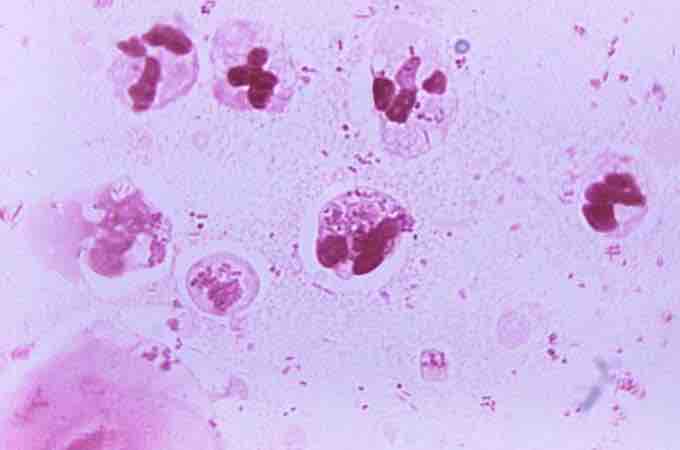Leukocytes (white blood cells) provide a number of functions that are primarily related to the immune system goal of defending the body from pathogens (foreign invaders). As a cellular component of the bloodstream, much of leukocyte activity takes place within the bloodstream, but it is not restricted only to the bloodstream. Many leukocytes are able to perform their functions in tissues or organs, sometimes due to damage or inflammation, and sometimes due to normal leukocyte transport through those organs. Leukocyte functions may be classified as either innate or adaptive immune system, based on several characteristics.
Innate Immune System Functions
The innate immune system is non-specific and refers to the general ability of the body to prevent pathogen entry and destroy pathogens that do enter the body. Innate immune system functions are rapid responses that work to inhibit a pathogen as soon as it is detected in the body. Innate immune system functions from leukocytes include:
- Phagocytosis of pathogens. This process is performed primarily by neutrophils, macrophages, and dendritic cells, but most other leukocytes can do it as well. It involves the binding of an Fc receptor to a tail on a pathogen, engulfing the pathogen, and using enzymes and free radicals inside the leukocyte to destroy the pathogens.
- Inflammation. This process is performed primarily by mast cells, eosinophils, basophils, and NK cells. When a pathogen is detected, or when vascular endothelial cells release stress cytokines from injury (such as a cut) leukocytes will release a variety of inflammatory cytokines (such as histamine or TNF-alpha) that cause vasodilation, increased vascular permeability, and promote neutrophil movement to the site of inflammation.
- Degranulation. This process is performed by granulocytes like neutrophils. When pathogens are encountered, granule dependent apoptosis (a mechanism of cytotoxicity) may be induced in the pathogen by releasing perforins, granzymes, and proteaseases from their granules.

Neutrophils Phagocytizing Bacteria
Here, neutrophils can be seen to phagocytose and completely engulf bacteria.
Adaptive Immune System Functions
The adaptive immune system is specific to each pathogen on the basis of antigens, which are molecular components of pathogens that are used by leukocytes to recognize that specific pathogen. Compared to the innate immune system, adaptive immune functions work much faster and have a memory component to them as well, which prevents reinfection by the same pathogen, but more time typically passes before the adpative immune system is functional. Adaptive immune functions of leukocytes include:
- Antigen presentation. This process is primarily performed by macrophages and dendritic cells. Following phagocytosis, protein components (antigens) of the pathogen are expressed on leukocyte MHC molcules and are presented to naive T cells (and B cells) in the lymph nodes. The T cells will then start the adaptive immune response by rapidly proliferating and differentiating.
- Cell mediated activities. This process is performed by T cells. Pathogens that bear the T cell's antigen are destroyed through cytotoxic induced apoptosis and protease activity.
- Humoral activities. This process is performed by B cells, which secrete antigen specific antibodies. The antibodies bind to pathogens to opsonize (mark) them for phagocytes to engulf, neutralize them, or start a complement cascade in which proteins form a membrane attack complex to lyse the pathogen.
- Memory cell activity. Following antigen presntation, memory B and T cells are created which will rapidly produce new T cells or antibodies if the same pathogen is detected later on, which prevents that pathogen from reinfecting the organism.